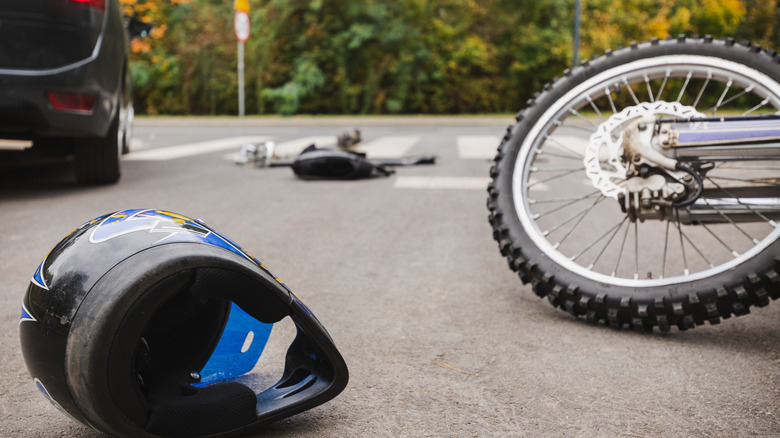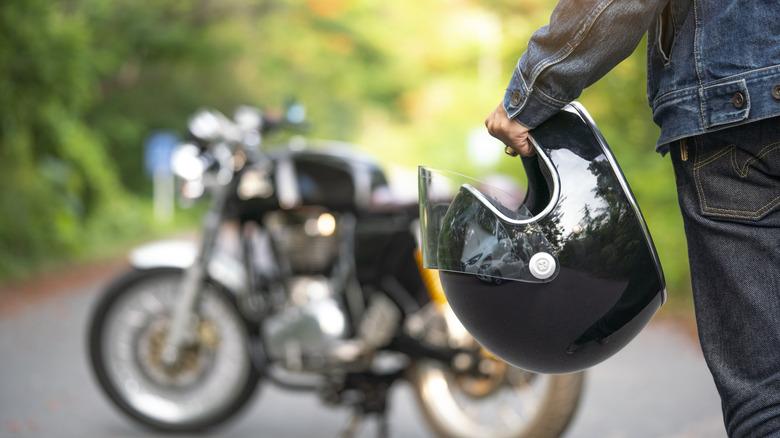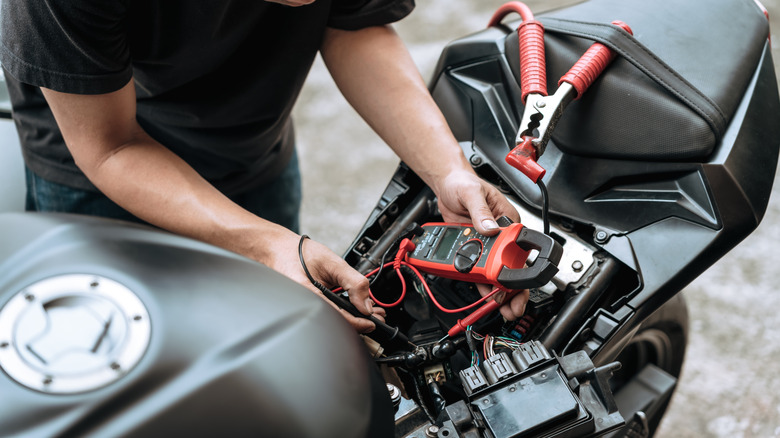Here's How To Know If A Motorcyclist Is In Distress
Riding a motorcycle brings with it a certain sense of freedom and personal empowerment. You're one with the wind, racing down the highway, and most motorcyclists are taught important tips to mitigate danger and hazards on the road on their own. However, even the most fiercely independent motorcycle riders are still human, and like the rest of us, they can occasionally get themselves into a spot of trouble on the road.
The tricky thing about getting help when you're a motorcycle rider is that it's not as easy to signal your needs or intent to other motorists as it is when you're in a car. If your bike is suffering some manner of mechanical failure, for example, it may not be as readily apparent as a failure on a car, especially if you don't have hazard lights. This, among other reasons, are why riders make frequent use of various kinds of signals and symbols, both on and off their vehicles, to quickly communicate what they need to other motorists in cars or also on bikes. Specifically, if a motorcyclist is in some manner of distress, the common signal to be on the lookout for is a motorcycle helmet placed on the ground, away from the motorcycle itself. If you see that helmet on the road and believe you have the capacity to help, you can stop and lend a hand.
A helmet on the ground behind the bike is a common distress signal
Motorcycle riders have an entire library of signals performed with their hands or feet that signal a variety of intents. For example, if a motorcyclist were riding with a group and wanted everyone to slow down and stop, they would hold up their hand in a fist with their arm at a 90-degree angle. However, if a motorcyclist is in genuine distress, to the point that they need to stop and get off the road, there's only really one signal used to let other motorists know: a helmet on the ground.
When a motorcyclist pulls over on the side of the road and places their helmet on the ground behind them, this can mean one of two things. First, it means that their motorcycle has suffered some manner of failure, such as engine problems or leaking oil, and they needed to stop to inspect or fix it. Second, and more worrisome, a helmet on the ground can mean that the rider themself is experiencing some manner of emergency, such as an illness or injury. Whichever specific meaning the rider intended, if you see that helmet on the ground, it's likely a problem they can't solve by themselves. Inversely, if you see a motorcyclist parked on the side of the road, but their helmet is still on or placed on their motorcycle, they're probably fine, and you shouldn't bother them.
You should only stop if you believe you can help
If you know that a motorcycle helmet on the ground is a sign of a rider's distress, you may feel like you should immediately stop and try to help if you see one. However, you should carefully consider whether or not you actually have the capacity to help before you stop; if you stop carelessly, you might end up just getting in the way.
If you don't have mechanical knowledge or the necessary tools for motorcycle repair, or emergency first aid training, there isn't much you can do to help. That's not to say you should just drive on and ignore them, of course — if you want to help, you can pull over nearby to call for help. If it doesn't look like the rider is in imminent danger, you can reach local non-emergency services by dialing 311. If they appear to be injured or non-responsive, call 911 for emergency services.


